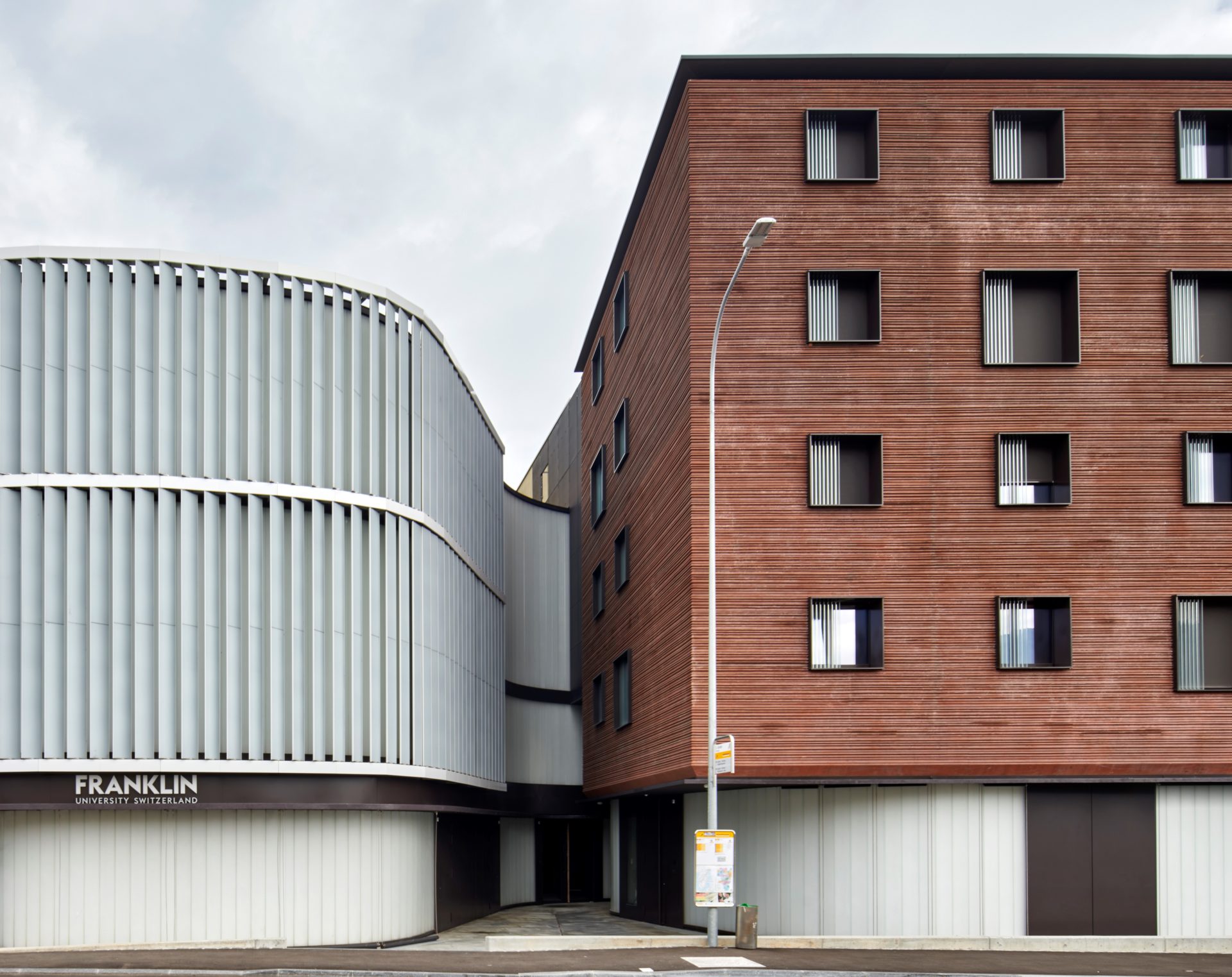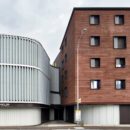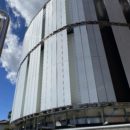8 January 2024

The highly innovative facade is based on the requirement to shade the glass volume in summer (to guarantee low energy consumption and prevent the building overheating) and on the other hand to allow the sun to warm the building in winter. Photo: Franklin University Switzerland.
Within the framework of the BIPVdSHADING project, an innovative dynamic photovoltaic shading device was engineered and manufactured, combining the functions of renewable electricity generation (PV modules) with solar protection (metal slats) in a unique element. The PV modules have been engineered to increase the shading tolerance and avoid mismatching due to the slats’ self-shading. Before being integrated into the facade system, small-size samples of PV modules were tested in SUPSI PVLab and a small-size mock-up installation was monitored for one year to assess the technology’s outdoor performance. The tests showed a temperature reduction of up to 3 °C at non-conventional shading scenarios compared to traditional PV modules, both in indoor and on the outdoor mock-up. In addition, the optimized design achieved a better energy performance by increase the energy yield of about 20% in comparison with the standard PV modules.
To assess the efficiency, monitoring, and cost optimization of BIPV shading systems throughout their operational lifespan, an approach that involves the creation of a digital twin of the mock-up was undertaken. This was achieved through the initial collection and meticulous control of data within a fully digitized framework, while ensuring the implementation of an advanced data management system. This demonstration serves as a practical testbed to assess the functionality and explore the untapped potential of the Digital Twin.
The solar tracking photovoltaic shading device was installed in the building façade of the new pavilion of Franklin University. The result is a flagship example in Switzerland of a highly aesthetic photovoltaic shading system. The installation, testing and monitoring of the technology in real operating conditions represents a pilot installation for achieving new information, assessing KPIs and performance to increase the TRL and ensure the system market penetration. As the monitoring is ongoing only the pilot installation’s six-month results are presented in the interim report.
To illustrate the compelling value proposition of the PV shading device solution implemented at Franklin University an extensive construction site monitoring initiative was conducted. This comprehensive endeavour, which involved a stakeholder analysis, time and procedural delineations, expenditure assessment, and the identification of challenges and opportunities, serves to foster collaboration between the photovoltaic sector and the building and infrastructure industry.
The final report is expected to be published in November 2024.





